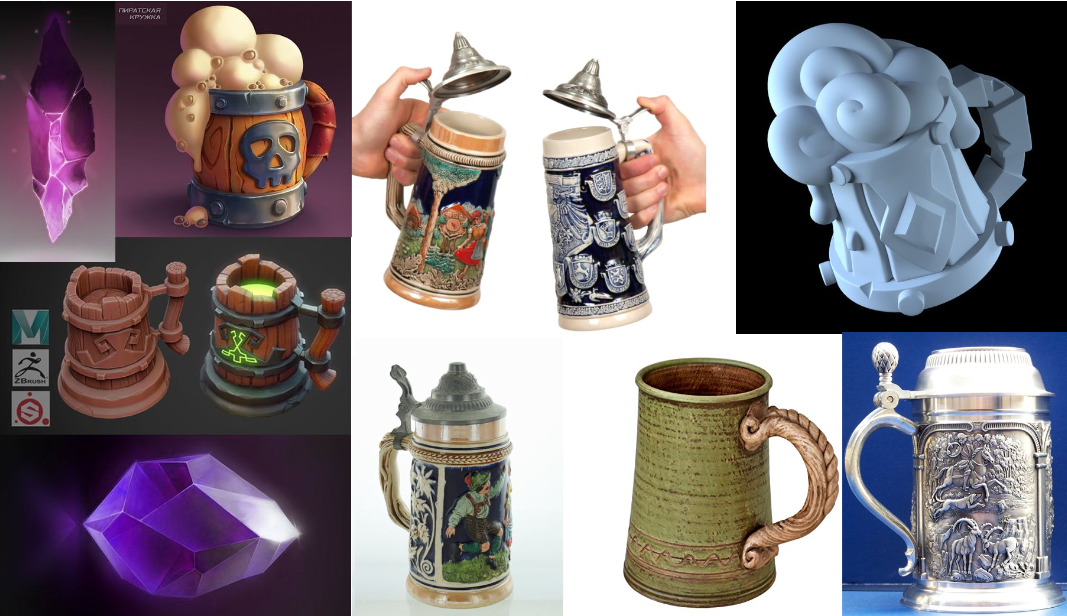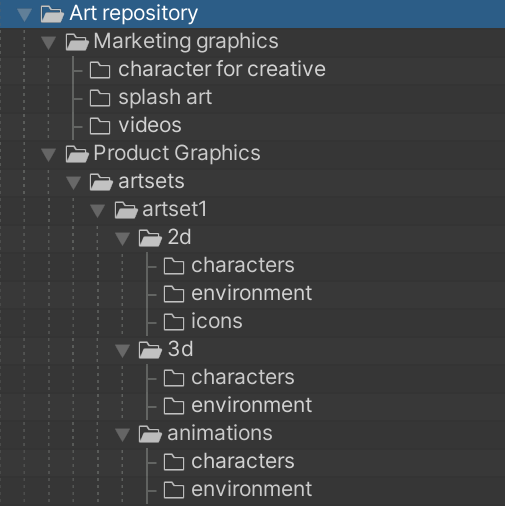How to make cool art, use clear design specifications to help the artists and leads, and how to store assets properly when working on multiple projects at once.
Everyone loves cool art! But not everyone knows that it requires not only a lot of creative effort, but also a well-oiled technical workflow that supports artists, game designers and leads. Experts from Geeky House will share their know-how on clear design specs and asset storage practices, and explain why artists should never look for their own references.
“All of us are creative, but...”
Geeky House art leads told us why artists need clear design specifications
Dmitry Kluyev, Senior 2D Artist / Geeky House
Art is not an independent area of development. The graphics must always meet clear requirements provided either by the game designers or the marketing department. These requirements determine style, looks, fidelity, functionality and usability. If the requirements aren’t clearly described, that means the producer doesn’t fully understand what kind of art they want to see, and this will unavoidably affect the result.
Artyom Salomatin, Art Lead / Geeky House
All of us are creative, but you can’t get far without references and guidelines. Let’s say we have a task to create “an ancient demonic goblet.” The idea sounds very clear, but it really isn’t. Here are some questions off the top of my head: “Is the demonic nature of this goblet obvious?” “Does it have horns or other demonic attributes, or does it only hint at its nature?” “Do you need a specific shape? Does it look like a simple cup or, say, a skull?” “What materials is it made of? Gold, or maybe s***t, forgive my choice of words?” “What’s its condition: is it shiny or old and mossy?” “Does it need logos or some lore elements?”
The designer (or another specialist) who creates a task needs a very good understanding of what they want to get back. So, a nice-sounding description like “an ancient demonic goblet” simply doesn’t work. Give the artist some hints, details and specifications, and the result will make you happy!

Clear, concise, and discussed
What design specifications for art should look like
Aleksandr Ivakhin, 2D Lead Artist
Your design specs should be clear and simple, and they should include images and references as well as the text. Specs should evoke an image of the game, creating the right first impression. The references must be selected by the project’s lead, since it’s the core of their vision. The artists should never look for references themselves, since those would reflect their own vision which may be different from the general concept — that could lead to a different result from what was originally envisioned.
Following a unified style is the most important thing. Design specs should describe the full picture, their points should not contradict each other. You don't want a situation where the concept changes at some point but the specs don't reflect that. The text of the specs should be discussed with the programmers and the artists, so that the task is formulated the same way for everyone instead of varying between different specialists. Having these discussions can help avoid inconsistencies and missed nuances. And references, of course — you must have references.
Artyom Salomatin, Art Lead / Geeky House
It’s paramount that the design specs are clear to the artist but also allow for creative freedom. Imagine a game designer wants “a mug full of magical ‘beer’ and a magic gem.” Sounds fun, has fantasy vibes, but it’s not at all clear how that thing would look.
If I were creating design specs, they’d look like this:
1. An antique beer mug (say, out of clay), and references.
2. Intricate carving and inlays, references.
3. The mug contains ‘beer’ (ginger beer, of course, to fit the age rating): a foamy, purple, probably magical drink; references of a mug with foam on top.
4. There must be a large purple gem inlayed into the mug, its color matching the color of the drink; references of inlayed gems.

The rest is up to the artist and their creativity. If the game designer needs more elements (something regarding lore or anything else), those need to be specified, and their importance must be explained. For example, say, there must be a rusty nail sticking out of the side of the mug, because this mug belonged to Sir Korzymyslov, who would always run a nail into a mug with his bare hands after finishing his drink.
These are the kind of design specs an artist will thank you for. It can also reduce the number of subsequent adjustments, which would make everyone happy.
Dmitry Kluyev, Senior 2D Artist / Geeky House
Design specs must concisely describe all the nuances and states of the required asset, but you also need to think about the possibility of misinterpretations. Unless it’s meant to be creative research, you need to attach both visual and utility references.
Grigoriy Polyakov, Producer / Geeky House
It’s convenient to create general design specs for the whole art department that would include the minimal required information. Let’s take, for example, design specs for a 2D asset. This is what they could look like:
- File name: always provide the desired final name for the deliverable.
- Save path: mention where the artist should deliver their file.
- Object type: describe what this is — a quest object, a prop, a decal or something else. This is important because the artist needs to know what the asset is for and in which project it’s going to be used. This may affect the level of detail, as well as certain project- and object-specific visual requirements.
- Description: as short as possible, listing the nuances and the planned use.
- States: if this object can exist in multiple states, this has to be described in the specs. Firstly, it would reduce the production time. Secondly, it’s always better when one person handles the whole task: they’re already immersed in the context and know what needs to be done.
- References: find both thematic and stylistic references for the object you need. They have to convey the idea and the visuals of the object but not be overloaded.
Collective development workflow
Why and how to properly store assets
Dmitry Kluyev, Senior 2D Artist / Geeky House
Game development is a collective endeavor that involves multiple people from different areas. This process is long and tied to the international schedule. If you don’t create a unified content storage workflow (that includes assets), then, as you get further into the development and the amount of content increases, development chaos will grow exponentially — all because you don’t have a well-organized repository.

It’s really simple: proper asset storage makes everyone’s lives easier!
Developers and game designers won’t have to sort through tons of junk, and they will (almost) always know where to find the asset or object they need. The artists will be happy, too: when they need to fix something or simply look over an asset package, they won’t waste their time sorting through confusing folder and file structures. A new artist will also have an easier time immersing themselves into the context and style of the project. You can just look over the assets and see what should be used and what can be safely deleted.
Grigoriy Polyakov, Producer / Geeky House
Just like with design specifications, a unified storage system is good for everyone in the pipeline:
- The structure of assets must be clear and readable
- The naming conventions must be understandable for everyone
- Order must be maintained throughout
- The assets must be categorized by type
It's also a good idea to split everything into two general folders. One for game designers (you could call it ‘READY’), one for artists (‘SOURCES’). This would help avoid confusion between the work-in-progress files used by the artists and the completed assets ready to be used. Here are some examples:
/Sources/Objects: contains folders with objects of various types
/Sources/Objects/Decals: contains files with intermediary versions and PSD (Photoshop) files of decals
/Sources/Objects/Fences: contains files with intermediary versions and PSD (Photoshop) files of fences
/Sources/Objects/Quests: contains files with intermediary versions and PSD (Photoshop) files of quest icons
/Sources/Objects/Resources: contains files with intermediary versions and PSD (Photoshop) files of resource icons
When an asset is ready and approved by the producer or project manager, the final version of that file is converted to PNG and moved by the game designers into the Ready folder.
/Ready/Objects: contains folders with objects of various types
/Ready/Objects/Decals: contains all decals
/ReadyObjects/Fences: contains all fences
/ReadyObjects/Quests: contains all quest icons
/ReadyObjects/Resources: contains all resource icons
All of this may sound obvious, but the importance of storage is often ignored, which leads to conflicts, loss of good work, and just general chaos that makes it harder for the team to work with every new asset. Simply put, keep your things in order. Start small, and it'll make it much easier to achieve big results.
Authors
Dmitry Kluyev, Senior 2D Artist
Artyom Salomatin, Art Lead
Aleksandr Ivakhin, 2D Lead Artist
Grigoriy Polyakov, Producer
Mila Ponomareva, Brand Manager
Artyom Salomatin, Art Lead
Aleksandr Ivakhin, 2D Lead Artist
Grigoriy Polyakov, Producer
Mila Ponomareva, Brand Manager


